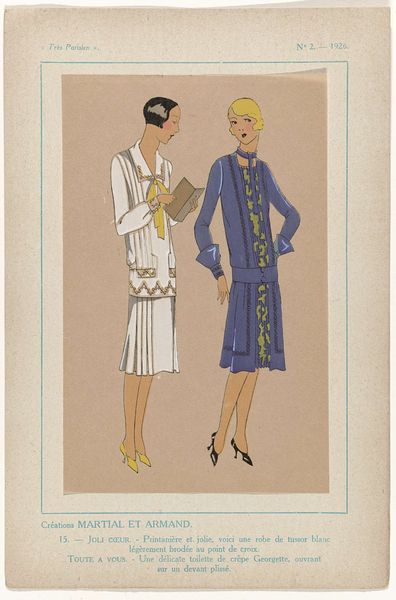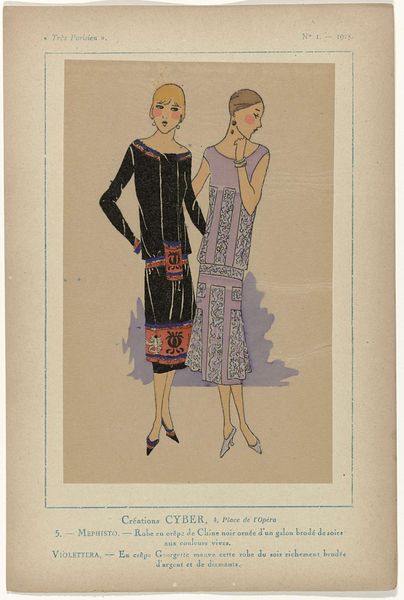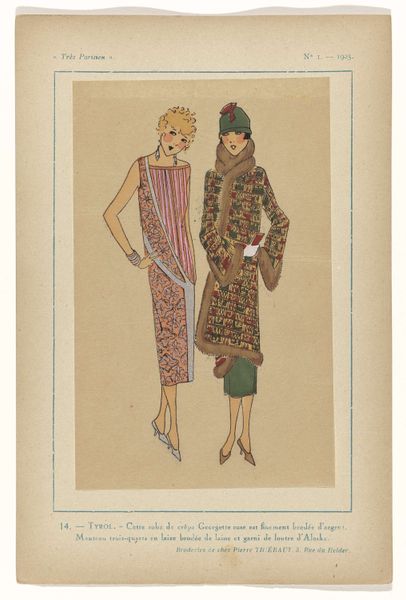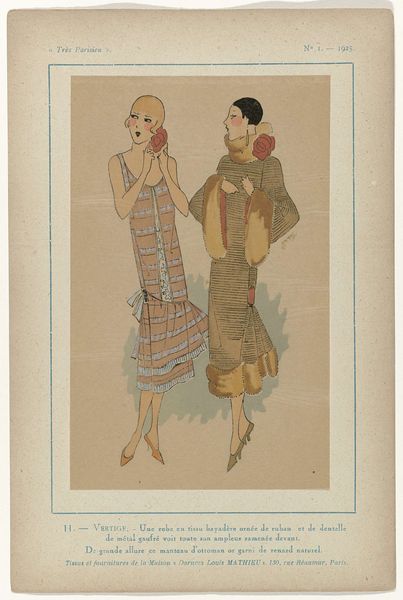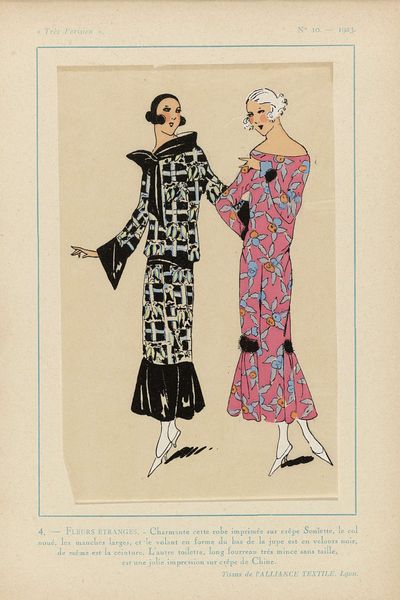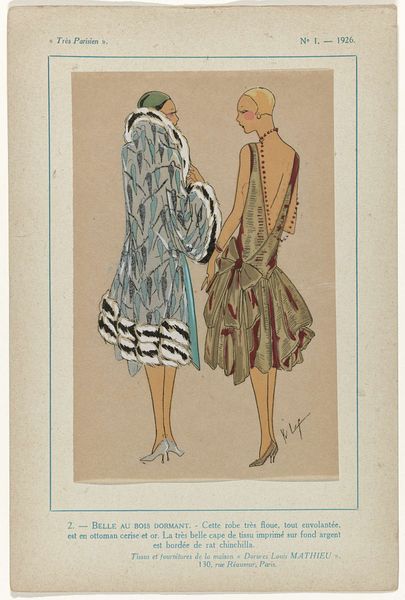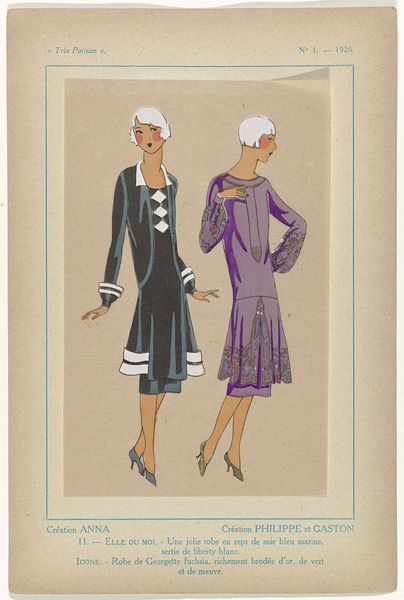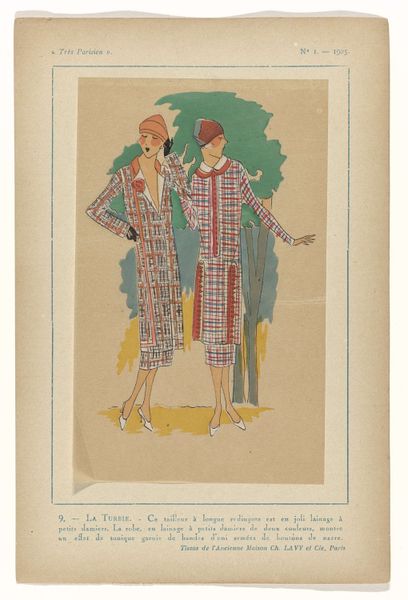
Très Parisien, 1924, No. 7 : 12.-ÉCOLIÈRES.- Simple et nette, (...) 1924
0:00
0:00
graphic-art, print, paper
#
portrait
#
art-deco
#
graphic-art
# print
#
paper
#
historical fashion
#
character design for animation
#
watercolour illustration
Dimensions: height 270 mm, width 180 mm
Copyright: Rijks Museum: Open Domain
Curator: This is a print called "Très Parisien, 1924, No. 7: 12.-ÉCOLIÈRES.- Simple et nette, (...)" dating to 1924, housed here at the Rijksmuseum. Editor: Oh, it’s charming. There’s something so delightfully self-assured about the figures—almost aggressively stylish. I can certainly see the Art Deco influence; these figures feel incredibly modern for their time. Curator: It captures the spirit of the Garçonne perfectly. Beyond simple aesthetics, we see how post-war society, especially in Paris, embraced a sense of freedom and modernity. It marked a break from the constricting expectations and imagery of previous eras. Editor: And it shows so much through these confident "schoolgirls." Their fashion feels symbolic, reflecting women claiming agency in their lives. Are they really schoolgirls though? They seem a little too glamorous and dressed up. Curator: The title itself might be ironic. The "schoolgirls" tag serves as a cultural wink to a certain demographic pushing the boundaries. In terms of style, we see that the graphic quality of this print allows for crisp details in clothing and accessories, indicative of then-new technologies allowing for more affordable reproductions and broader distribution of fashion. Editor: I notice, especially with the woman on the left, the focus on bold, almost masculine lines in the clothing. It's striking, and rather different for this period. There’s this subversion happening, with traditional "feminine" garments redesigned in sharper silhouettes. Even their poses—confident and upright—underscore a changing ideal. Curator: It's not only about the clothing; it's about a shift in the visual language surrounding women. How they chose to represent themselves in print and in life directly confronted conservative norms, changing the accepted imagery. We're viewing not just a pretty picture but witnessing a cultural statement. Editor: Absolutely. The artist uses this graphic, almost poster-like aesthetic to deliver that message with impact. They almost serve as fashion icons, advocating for something revolutionary at the time. They feel alive even now. It's incredible how an image of stylish young ladies manages to say so much. Curator: Indeed. This piece invites us to consider how clothing can represent not just aesthetics but aspirations, values, and the dynamics of societal transformation, captured perfectly within these lines.
Comments
No comments
Be the first to comment and join the conversation on the ultimate creative platform.
